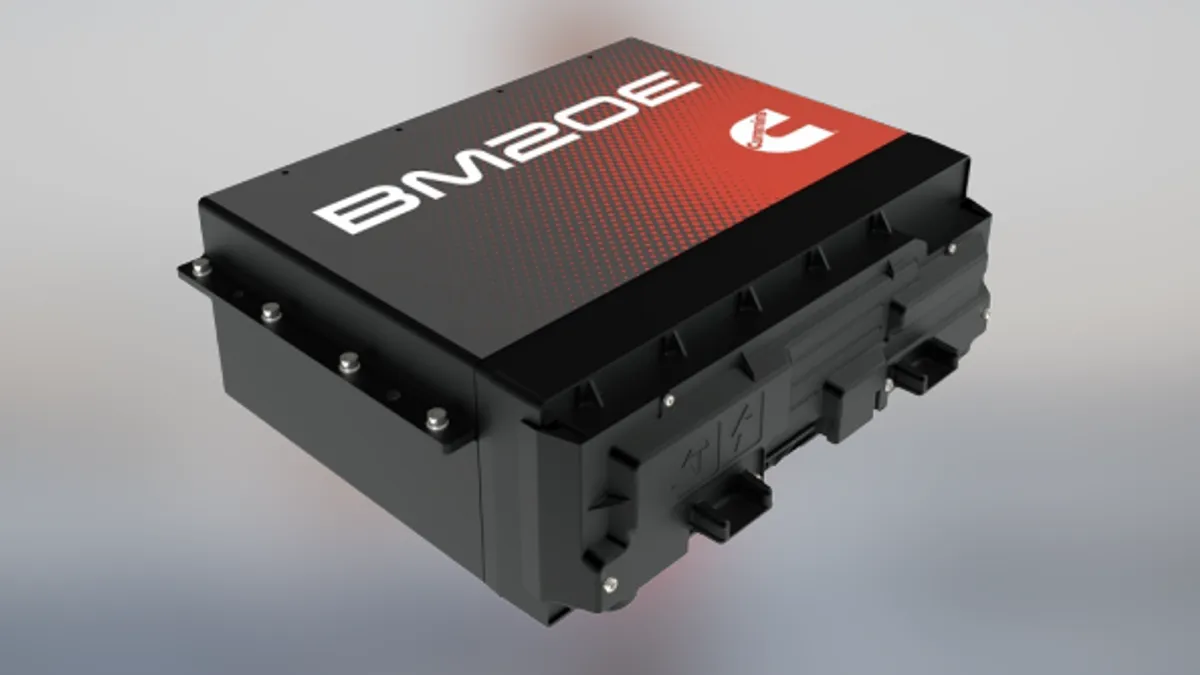Dive Brief:
- Cummins, a manufacturing company, on Tuesday announced a multiyear partnership with the University of California (UC) San Diego and its battery validation lab to analyze viable business applications and technical approaches to reuse and repurpose electric vehicle (EV) batteries.
- The partnership will focus solely on lithium-ion batteries and is one of the first projects to exclusively study second-life battery capabilities that were designed for commercial applications, Cummins said.
- Second-life applications are important as the U.S. depends on foreign countries for the critical materials used in batteries. In addition, lithium-ion batteries are collected and recycled at a rate of less than 5%, according to the Department of Energy (DOE).
Dive Insight:
With the expected uptick in EV adoption over the next few years, companies around the world are looking for ways to repurpose used EV batteries that can have up to a decade of life left in them, and energy storage is one potential application.
Previous second-life projects often included EV manufacturers. In October, Nissan and EDF Energy announced a project that will combine used EV batteries with demand response capabilities developed by the U.K. energy company. Also in 2018, Wärtsilä and Hyundai Motor Group partnered on a project to develop uses for second-life EV batteries in Germany. Hyundai estimates that in 2025, there will be 29 GWh of second-life EV batteries available.
A focus area of the agreement between Cummins and UC San Diego will be stationary energy storage system performance under grid energy storage applications, Katie Zarich, a spokesperson for Cummins, told Utility Dive. University researchers will perform tests and develop an outdoor second-life demonstration system comprised of Cummins battery modules, according to a statement.
For Cummins, which founded its electrified power business in 2018, the partnership will provide valuable data on the aging behaviors of its battery modules.
"Electrification has the potential to play an enormous role as we move toward decarbonization of many industries, but in order to maximize that potential, it's crucial that we focus on the sustainability of the entire product life cycle," Julie Furber, vice president of electrified power of Cummins, said. "One piece of the puzzle that requires additional research is the second-life of batteries, and Cummins now has a highly-skilled and capable partner in UC San Diego as we move towards the development of reuse solutions."
Used EV batteries maintain a significant battery capacity, up to 70%, according to Nissan and EDF. While this may no longer meet the requirements to power a vehicle's drivetrain, it is sufficient capacity for less demanding applications, Cummins said.
The Indiana-based company also pointed out that repurposing batteries increases sustainability as it postpones recycling, which has proved to be a challenge.
Earlier this year, the DOE launched a lithium-ion battery recycling prize and established an associated battery recycling R&D center. The recycling price seeks to encourage American entrepreneurs to find innovative solutions to collecting, storing, and transporting discarded lithium-ion batteries for eventual recycling.
Cummins is committed to invest $500 million over three years in its electrified power business, Zarich told Utility Dive.













